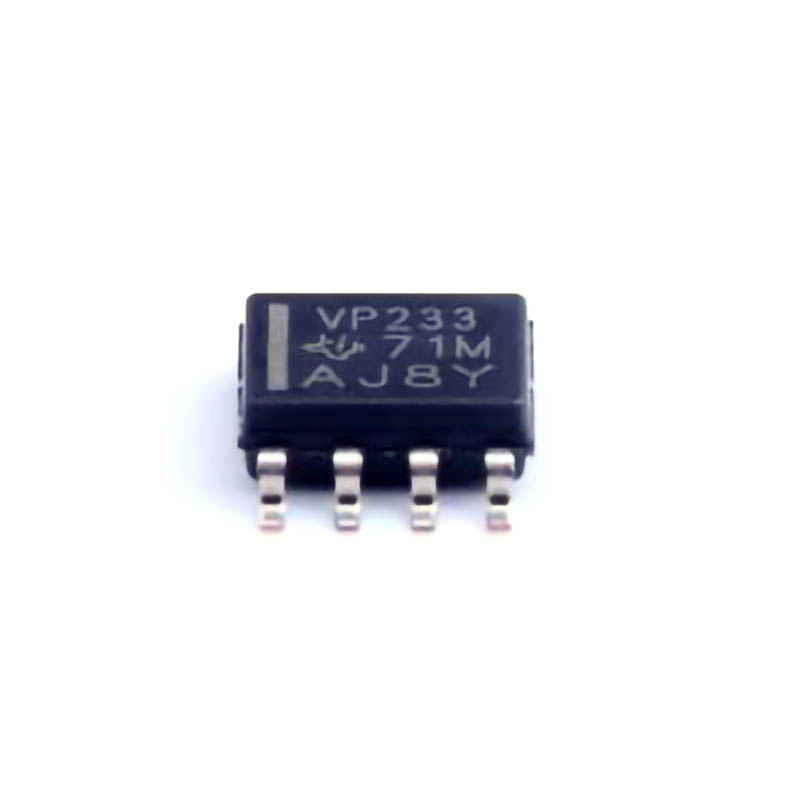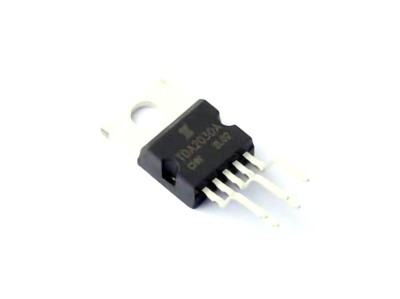
Introduction to SN65HVD233DR and Its Role in CAN Bus Networks
The Controller Area Network (CAN) is a reliable, robust communication protocol primarily used in automotive, industrial, and embedded systems for exchanging information between various electronic control units (ECUs). As industries continue to demand higher performance, reliability, and real-time data exchange, the CAN protocol remains a preferred choice due to its fault tolerance and flexibility. At the heart of any CAN bus network is the physical layer transceiver , and the SN65HVD233DR by Texas Instruments (TI) plays a significant role in ensuring smooth data transmission, especially in environments with potential signal interference.
The SN65HVD233DR is a high-speed, differential bus transceiver designed specifically for CAN networks. It features low Power consumption, high-speed capabilities, and enhanced noise immunity, making it an ideal solution for various applications, from automotive to industrial automation systems. In this first part, we’ll explore the essential features of the SN65HVD233DR and its pivotal role in maintaining the integrity and performance of CAN bus networks.
Key Features of SN65HVD233DR Transceiver
The SN65HVD233DR is a robust transceiver that facilitates efficient data communication over a differential bus, a characteristic essential for minimizing noise interference and ensuring reliable transmission in electrically noisy environments. Some of its standout features include:
Low Power Consumption: The device operates with minimal current consumption, making it suitable for energy-efficient applications, such as electric vehicles and IoT devices.
High-Speed Data Transmission: Supporting data rates up to 1 Mbps, the SN65HVD233DR ensures fast communication, essential for applications requiring high throughput.
Fault Tolerance: The transceiver supports both dominant and recessive states, allowing it to effectively handle network errors and maintain network integrity even under adverse conditions.
Temperature Range: The device is designed to operate across a wide temperature range, making it ideal for automotive and industrial applications where environmental conditions can be extreme.
Bus Wake-Up Feature: The SN65HVD233DR offers an automatic wake-up feature, ensuring the device can quickly recover from sleep modes, reducing latency during network communication.
Importance of Signal Integrity in CAN Bus Networks
Signal integrity is a critical concern in CAN bus networks, particularly when devices are communicating over long distances or in environments filled with electrical noise. In such scenarios, the CAN transceiver must be capable of distinguishing between valid signals and noise, ensuring reliable communication despite potential interference. The SN65HVD233DR, with its built-in features like high noise immunity and fault tolerance, plays a crucial role in maintaining signal integrity.
The differential nature of the CAN protocol inherently helps reject common-mode noise, but the physical layer device, like the SN65HVD233DR, still needs to ensure proper voltage levels and data synchronization. This is where its ability to detect and suppress noise and interference comes into play, helping ensure that only valid data is transmitted and received, even in challenging conditions.
Interference Suppression Techniques in the SN65HVD233DR and Their Applications
While the CAN bus protocol provides a strong foundation for noise immunity through differential signaling, real-world applications often encounter electrical noise, grounding issues, and other sources of interference. The SN65HVD233DR integrates several techniques and design considerations to minimize these challenges, ensuring that the communication network remains stable and reliable under various operating conditions. In this second part of the article, we will explore the key interference suppression techniques of the SN65HVD233DR and how they contribute to the robustness of CAN bus networks.
Common Sources of Interference in CAN Bus Networks
Before diving into the suppression techniques, it is essential to understand the primary sources of interference in CAN bus networks:
Electromagnetic Interference ( EMI ): Common in automotive and industrial environments, EMI arises from high-power systems, motors, or radio frequencies, potentially disrupting data transmission.
Grounding and Voltage Fluctuations: In large networks or those spread across extended distances, differences in ground potential can introduce voltage fluctuations, leading to errors in data transmission.
Crosstalk: In densely packed circuit boards or tightly packed wiring, one signal line can couple unwanted signals to adjacent lines, causing data corruption or loss.
Reflection and Signal Attenuation: In long cable runs, signal reflections and attenuation can degrade the quality of the transmitted signal, leading to errors or communication failures.
Key Interference Suppression Techniques in SN65HVD233DR
To mitigate the impact of these challenges, the SN65HVD233DR incorporates several key features designed to suppress interference and ensure reliable data transfer.
Differential Signaling for Noise Immunity: The primary advantage of CAN bus is its use of differential signaling, where two complementary signals are transmitted across the bus. This approach naturally rejects common-mode noise, as any interference affecting both lines equally will cancel out during the differential measurement. The SN65HVD233DR utilizes this method to provide an inherent level of noise rejection, making it highly resilient to external electrical noise.
Low Input/Output Impedance: The SN65HVD233DR is designed with low input and output impedance, which minimizes the potential for reflections and ensures a clean transmission line. This feature is especially important in long cable runs, where signal integrity can be compromised by poor impedance matching.
Integrated Bus Pins Protection: One of the most critical aspects of the SN65HVD233DR is its integrated protection mechanisms. The transceiver features ESD (Electrostatic Discharge) protection on its bus pins, helping to safeguard the device from voltage spikes caused by environmental factors such as lightning or power surges. These protection circuits prevent damage to the device, ensuring continued operation in harsh environments.
Error Detection and Fault Signaling: The transceiver is equipped with robust error detection features that continuously monitor the CAN bus for issues like bit errors, frame errors, and acknowledgment errors. When a fault is detected, the SN65HVD233DR can initiate recovery protocols such as retransmitting the message or signaling other nodes in the network about the issue. This proactive error management helps to maintain the integrity of the network.
Bus-Sleep Mode and Wake-Up Mechanism: In energy-sensitive applications, such as electric vehicles, the SN65HVD233DR offers a bus-sleep mode, which reduces power consumption when the network is idle. The device can also detect when activity resumes on the bus and automatically wake up, ensuring seamless communication with minimal power loss.
Termination Resistors and Cabling Practices: Proper termination and cabling practices are essential for minimizing reflections and signal degradation in long-distance CAN bus communication. Although not directly a feature of the SN65HVD233DR itself, proper termination with resistors and the use of high-quality twisted-pair cables can complement the interference suppression capabilities of the transceiver, further enhancing the overall performance and reliability of the CAN bus network.
Applications of SN65HVD233DR in Real-World Scenarios
The interference suppression capabilities of the SN65HVD233DR make it an excellent choice for use in environments where electrical noise is prevalent, or where high levels of data integrity are required. Here are some common applications of the device:
Automotive Networks: The automotive industry demands high levels of communication reliability between various ECUs, including engine control, infotainment, braking systems, and lighting control. The SN65HVD233DR ensures that data can be transmitted with high fidelity even in the presence of EMI from the engine or electrical systems.
Industrial Automation: In factories and industrial plants, machinery, motors, and high-voltage equipment can generate significant interference that threatens communication between controllers, sensors, and actuators. The SN65HVD233DR helps maintain reliable data exchange, ensuring that industrial processes remain automated without disruptions.
Medical Equipment: CAN bus networks are increasingly used in medical devices for data communication between sensors, monitors, and controllers. The robust interference suppression and high reliability of the SN65HVD233DR ensure that critical patient data is transmitted accurately without error.
Aerospace: In aerospace applications, where signal integrity is vital, the SN65HVD233DR plays an essential role in ensuring that communication between avionics, navigation systems, and other subsystems remains uninterrupted and secure.
Conclusion
The SN65HVD233DR from Texas Instruments is a cornerstone in ensuring the stability, reliability, and efficiency of CAN bus networks, particularly in environments prone to interference. By utilizing advanced interference suppression techniques such as differential signaling, ESD protection, error detection, and low-power modes, the device enables robust communication in automotive, industrial, and other critical applications. As the demand for real-time, reliable communication continues to grow across industries, the SN65HVD233DR offers an excellent solution to ensure that data flows uninterrupted and securely, even in the most challenging environments. Whether used in high-speed automotive communication or mission-critical industrial systems, this transceiver ensures that CAN bus networks perform at their best.
Partnering with an electronic components supplier sets your team up for success, ensuring the design, production, and procurement processes are quality and error-free.

